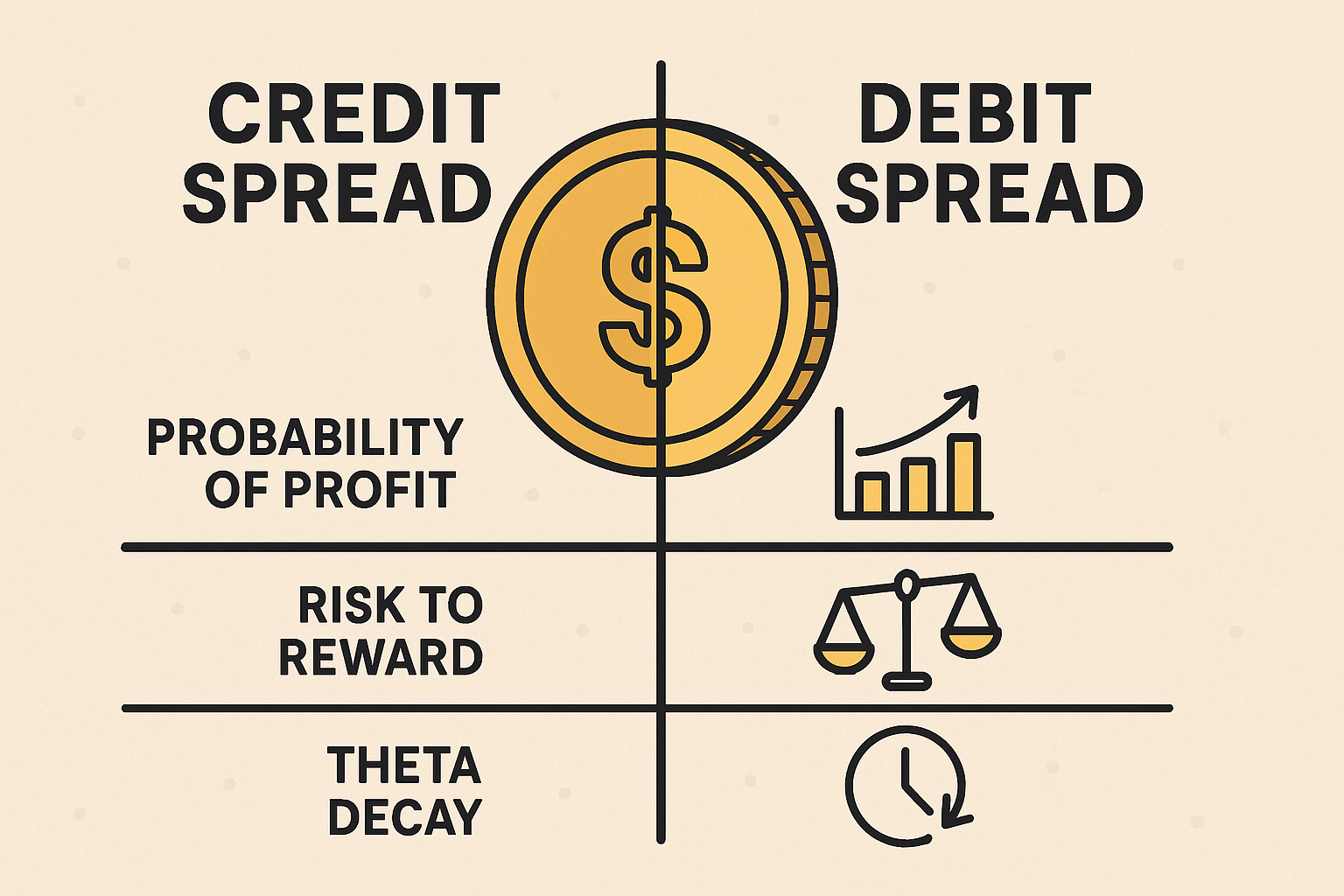When traders first encounter the distinction between credit spreads and debit spreads, it’s easy to assume that one must inherently offer an advantage over the other. The truth, however, is far more nuanced. Neither strategy inherently outperforms the other—each can be structured in ways that mirror probability of profit, risk-to-reward ratios, and even theta decay.
Understanding Credit and Debit Spreads
Before comparing their similarities, let’s define them:
- A credit spread involves selling an option and buying another option with the same expiration but a different strike price, collecting a premium in the process.
- A debit spread, on the other hand, requires buying an option and selling another at a different strike price, paying a net premium upfront.
At first glance, traders might think credit spreads have an edge due to receiving premium upfront but reality there is no inherent advantage in the majority of the cases. In fact when analyzed deeply, both can be structured to behave nearly identically.
Probability of Profit
One of the biggest myths in options trading is that credit spreads always have a higher probability of profit (POP) due to selling premium. While this is often true when selling far-out-of-the-money (OTM) options, it is not inherent to credit spreads themselves.
Probability of profit is dictated by how the spread is structured relative to the underlying asset’s expected move. A deep ITM debit spread has just as high a probability of profit as a deep OTM credit spread. Similarly, a carefully chosen at-the-money (ATM) debit spread can have the same POP as an ATM credit spread, depending on volatility expectations.
Risk-to-Reward Tradeoff
Traders often assume that credit spreads provide a higher probability of small gains and debit spreads offer higher risk-to-reward ratios. In reality, both can be set up to match risk-to-reward profiles.
- A bull put spread (credit) can be structured to have nearly identical reward-to-risk characteristics as a bull call spread (debit).
- Likewise, a bear call spread (credit) can mimic the behavior of a bear put spread (debit).
Since risk-to-reward is simply a function of strike selection, positioning spreads appropriately negates any perceived advantage of one over the other.
Theta Decay Considerations
Time decay (theta) is generally assumed to favor credit spreads, since they benefit from the erosion of the sold option’s value. However, theta can work against them when the underlying moves against the spread, forcing traders to manage losses actively.
Debit spreads, often thought to suffer from theta decay due to owning options, can be structured in ways that counteract this effect. For example:
- An ATM debit spread with a short-term expiration can actually decay slower than an OTM credit spread due to intrinsic value considerations.
- A deep ITM debit spread can behave like a stock substitute, reducing theta sensitivity while still offering directional exposure. It will also benefit from Theta decay as much as a similar OTM credit spread.
Final Thoughts
Rather than choosing between credit and debit spreads based on outdated or false assumptions, traders should view them as customizable tools. Each can be structured to mimic the other in terms of probability of profit, risk-to-reward, and theta decay. The key lies in selecting the right strikes, expirations, and market conditions rather than fixating on whether a spread is a credit or a debit.
At the end of the day, neither strategy holds a universal edge—only strategic implementation makes the difference. Whether you’re collecting premium or paying it, understanding these mechanics ensures smarter trade decisions, free from bias.



